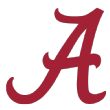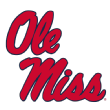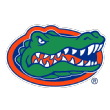The NFL combine is just a small sliver of the evaluation process. Evaluators often use it to confirm their scouting reports from the tape. Here's how some of the top players on my board fared in Indianapolis.
QUARTERBACKS

Carson Wentz, QB, North Dakota State
Wentz and Jared Goff separated themselves from the pack even more this week. After entering Indianapolis with the best tape of the QB crew, they both put on a clinic during the on-field drills. Wentz, in particular, showed quick feet in his drops and excellent timing and placement on his throws. He has been consistent throughout the postseason process, and there have been very few surprises from his tape. I was told that Wentz could test similar to Andrew Luck, but that didn't really come to fruition. As the chart below shows, Luck had a much stronger workout session at the combine, despite the two quarterbacks having very similar frames. With that said, Wentz's testing numbers all around were average for the position, so teams won't come away from the combine with concerns in that regard.

Jared Goff, QB, Cal
On tape, Goff is a naturally accurate thrower who displays above-average anticipation. Not much changed during on-field passing drills Saturday. He showed off his smooth stroke and threw the ball with good touch and accuracy throughout. Goff isn't an elite athlete -- his measurables in the 40-yard dash, vertical jump and broad jump were all average or slightly below average for his position -- but we knew that coming in. While he will never be a legit running threat in the NFL, he shows the ability on tape to escape pressure and occasionally scramble for a first down. That's exactly what teams want to see. The only red flag for Goff this week? His 9-inch hands.

Paxton Lynch, QB, Memphis
Let's start with the positive: Lynch looks the part -- 6-foot-6½, 244 pounds, 10¼-inch hands. And the ball gets to his receivers in a hurry. Lynch has the strongest arm of the top three quarterbacks, and he showed off a great deep ball during on-field drills. But he comes from an offense that relied on a lot of screens and short routes, and when asked to throw a more diverse set of passes at the combine, he was inconsistent with his accuracy. He plays with loud feet and is still working through his drops. Lynch is an intriguing prospect, but he's not nearly as polished as Wentz or Goff.
RUNNING BACKS

Ezekiel Elliott, RB, Ohio State
Coming into combine, I thought Elliott could go in the 20s -- somewhere in the range of the Jets (at No. 20) and Texans (No. 22). He ran an exceptional 40-yard dash time for a running back (4.47), which confirmed what I saw on tape. This guy has breakaway speed once he gets a crease. Based on what we know now, he has a chance to be a top-10 pick. The earliest he could go would be No. 6 overall to the Ravens, who have a need at the position. The Bears (No. 11) are also an option, if the right defensive player isn't there and they feel like adding another playmaker to the fold. Elliott doesn't break as many tackles as you would like to see, but he checked in at nearly 6-foot and 225 pounds; he has the frame and ability to be an every-down back in the pros.

Derrick Henry, RB, Alabama
This is a straight-line explosive back, and it shows up on tape. At the combine, he confirmed that his size-speed combo is off the charts. Weighing in at 247, Henry ran a 4.54-second 40-yard dash. He does a good job of gauging tempo on his outside runs, but his game is really about getting downhill. He's a bulldozer when he gets going. Additionally, his lower-body power was evident during the broad jump (10 feet, 10 inches) and vertical (37 inches). What we see on tape is that he's slower-than-ideal to redirect, which showed up in his below-average times in the three-cone (7.20) and short shuttle (4.38).
WIDE RECEIVERS

Will Fuller, WR, Notre Dame
Fuller cemented himself as one of the fastest wide receivers in this class with a scorching 40 time of 4.32 seconds. To put that number into context, only one other receiver broke 4.4 (Kolby Listenbee, 4.35), and the third-place guy came in at 4.42 (Trevor Davis). That's exactly what talent evaluators wanted to see from Fuller, who's a vertical burner on tape. My NFL comparison for Fuller right now is Jets WR Devin Smith, who was drafted out of Ohio State last season. They have similar frames (a shade over 6-foot and around 190 pounds). Fuller ran the 40 a full tenth of a second faster at the combine, but Smith showed more consistent ball skills on tape. Fuller had a lot of drops in college, and we got a possible explanation for why: His hands measured just 8¼ inches, smaller than Smith's (9 inches) and well below the five-year average for WRs (9¼ inches).

Sterling Shepard, WR, Oklahoma
Shepard needed to run well, and he did, posting a 4.48 40-yard dash. He also showed great explosiveness in his jumps -- 41 inches in the vertical (tied with Josh Doctson for No. 1 among WRs) and 10 feet 2 inches in the broad. Shepard didn't do as well in the agility drills, but that's an area in which he excels when you're watching the tape. He's a highly instinctive slot WR with good route-running ability and a history of showing up in big moments. His performance in Indy might have solidified him as a Day 2 pick.

Braxton Miller, WR, Ohio State
Miller didn't raise any red flags with his 4.50 40-yard dash, but it was underwhelming considering he checked in at a shade over 6-foot-1, weighed 201 pounds and was expected to run in the low 4.4s. He'll need to run faster at Ohio State's pro day on March 11. On the bright side, Miller blew away the agility drills as expected, running the short shuttle in 4.07 seconds (tied for tops among WRs) and the three-cone in 6.65 seconds (third best). Those quick feet are why many are intrigued by Miller, who has been playing wide receiver for less than a year. Much like at the Senior Bowl last month, Miller continues to look more natural as a pass-catcher.
OFFENSIVE LINE

Laremy Tunsil, OT, Ole Miss
It's frustrating that Tunsil opted out of both the 40-yard dash and bench press in Indy. You'd like to see him participate in at least one of the two drills, rather than waiting for Ole Miss' pro day. At this stage, there might not be as much separation as people seemed to think between Tunsil and Notre Dame's Ronnie Stanley. One positive for Tunsil: He looked really good during position drills. That means he has been staying in shape, so there's no concern about that. But there may be a concern about comments from his college teammate Robert Nkemdiche on Friday. The embattled defensive tackle said Tunsil was with him the night of his much-publicized incident. If NFL teams weren't already aware of this information, they'll dig around to see if there's more to it.

Ronnie Stanley, OT, Notre Dame
This is not a huge deal, but I just found it interesting to look at Stanley and Tunsil's measurables side-by-side. The Notre Dame product checked in taller than Tunsil (6-5¾ vs. 6-4) and with longer arms (by nearly 1½ inches). These two are pretty similar players. They're both better pass-protectors than run-blockers, and they both could stand to improve their overall strength, particularly when it comes to finishing in the run game. Stanley ran a solid 5.20, but nothing about his performance at the combine was exceptional. What's most important is that he avoided any red flags during the drills.

Jack Conklin, OT, Michigan State
Conklin has the height and arm length to be a left tackle, but on the tape I've watched, I see more of a right tackle skill set. His game is based on power and strength, and I've struggled to see how his athleticism and lateral agility translates into being a blindside protector. But after his testing at the combine, I may have to go back to see if I'm missing something. He ran the 40 in 5.0 seconds, the three-cone in 7.63 and the short shuttle in 4.57. Those aren't just elite times; they're Joe Thomas-esque. At the very least, Conklin solidified himself as the No. 3 OT and a first-round pick.
DEFENSIVE LINE

Joey Bosa, DE, Ohio State
At 269 pounds, Bosa ran a disappointing 4.86 40-yard dash. Coming into the combine, the one argument you could make against him was that he does not have exceptional get-off speed and acceleration around the edge. For some context, NFL pass rushers with a similar build to Bosa tested far better in the 40 and the vertical jump. (See chart below.) One notable exception? The Patriots' Chandler Jones, who was fifth in the NFL in sacks last season and ran a 4.92 at 6-foot-5 and 266 pounds. What makes Bosa special is his length and exceptional hand use as a pass-rusher. He plays with great leverage and power. With that said, it does raise some concern that Bosa posted below-average results in two of the explosion drills.

Robert Nkemdiche, DT, Ole Miss
Nkemdiche will continue to face questions about his off-field character and inconsistent motor on tape, but from an athletic standpoint, he proved that he's a rare breed. Nkemdiche weighed in at 294 pounds and posted a 4.87-second 40 and a 35-inch vertical. According to ESPN Stats & Information data, since 2006, only four other 290-pound-plus defensive linemen ran a sub-5.00 40 with a 35-inch vertical. Three of those four -- J.J. Watt, Mario Williams and Tyson Alualu -- ended up being selected in the top 11 of the draft. Nkemdiche is one of the ultimate risk/reward players in this draft.

Shaq Lawson, DE, Clemson
I didn't expect Lawson to put up good numbers at the combine -- the event isn't built for a guy like him, whose game thrives on power and effort more than speed and raw athleticism -- but the Clemson star had a pretty good day. He ran the 40 in 4.70 seconds, including a 1.64 10-yard split. Those aren't elite numbers, by any means, but they are above average for his position. The same goes for his results in the agility drills, which again don't really highlight the strengths of his game. Lawson, who led the FBS with 25.5 tackles for loss in 2015, is a high-energy defensive end who plays with a good mixture of relentlessness, technique and discipline. These results should help him lock down a spot in the first round as one of the top DE prospects in the class.
LINEBACKER

Noah Spence, OLB, Eastern Kentucky
A big part of Spence's pass-rushing prowess is his ability to get around the edge with speed. But he ran a disappointing 4.80 40-yard dash on Sunday. That's below the five-year average for outside linebackers (4.74) and especially concerning for Spence, considering he weighed in at 254 pounds. Von Miller and Khalil Mack, two recent draftees with similar frames as Spence, tested much better than the Eastern Kentucky product. (See chart below.) Spence, who transferred from Ohio State after failing two drug tests, did show off good lower-body explosiveness with his performance in the vertical (35 inches) and broad jumps (10 feet, 1 inch). At the Senior Bowl, Spence put on a pass-rushing clinic, displaying a rare quickness, along with the ability to bend around the edge. If you're looking for the best pure edge rusher in this class, I think this is probably still your guy, but his 40 time could scare some teams off.

Darron Lee, OLB, Ohio State
Coming into the combine, I thought Lee had a legit chance to run in the 4.5s. He did even better, posting an official 40 time of 4.47, the best mark among linebackers this year and the sixth fastest for a LB since 2006. That backs up what we saw on tape: Lee is a true sideline-to-sideline defender who thrives in space. Perhaps more impressive was the lower-body power Lee showed with an 11-foot-1-inch broad jump (best among LBs). According to ESPN Stats & Information research, since 2006, only 12 players have run that fast and jumped that far at the combine -- and all 12 were either wide receivers or defensive backs. Lee is one of the best overall athletes in this class, and he likely solidified himself as a first-round pick with his performance in Indy.
DEFENSIVE BACK

Jalen Ramsey, CB, Florida State
If you're looking for the best overall athlete in this class, Ramsey just might be your guy. At 6-foot-1 and 209 pounds, he had a great workout, running the 40 in 4.41 seconds. That was the eighth-best time for a defensive back. Perhaps more impressive, he wowed with a 41.5-inch vertical and an 11-foot-3 broad jump. Both figures tied with Cal running back Daniel Lasco for the best results at this year's combine. Ramsey is just the seventh player since 2006 to jump that high and that far in Indianapolis. In the position drills, he showed a little tightness in his hips and just average ball skills, but as I mentioned back in October, Ramsey's game and athleticism compares favorably to Patrick Peterson. (See chart below.) Ramsey will be at his best in press-man coverage in the NFL, and his long arms (nearly 33½ inches, elite for a DB) will help the cause. I think there's a four-man top tier in this year's class -- Ezekiel Elliott would make it five, but positional value hurts his case -- and Ramsey makes the cut.

Vernon Hargreaves III, CB, Florida
Hargreaves checked in at 5-foot-10½ and 202 pounds, a little undersized for what teams are looking for in their cornerbacks. He didn't run an elite 40-yard dash (4.50), but his broad jump (10-foot-10) and vertical jump (39 inches) showed good power in his lower half. While I saw a little tightness in his hips during drills, Hargreaves' excellent ball skills and exceptional foot quickness were on display for talent evaluators in Indy. The best pure cover corner in this class, Hargreaves has the quickness and fluidity to play man-to-man coverage at the next level. Even though his 40 time doesn't line up, I still think Hargreaves is worthy of a top-10 pick.

Eli Apple, CB, Ohio State
After watching Apple stick with Notre Dame speedster Will Fuller in the Fiesta Bowl, I had a feeling he might run well in Indianapolis. Apple's 4.40 40-yard dash ranked seventh best among defensive backs. He has the height NFL teams are looking for at 6-foot-1, but he occasionally gets outmuscled for the ball with his 190-pound frame. Apple played a lot of press-man coverage at Ohio State, and while he needs to improve his technique and ball skills, he shows pretty good instincts on tape. He didn't participate in the vertical or broad jumps, so we'll have to wait until Ohio State's pro day to evaluate him in those areas. Overall, Apple's performance helped solidify himself as a top-five cornerback and a fringe first-rounder.

William Jackson III, CB, Houston
Coming into the combine, Jackson was one of the most underrated players in this class, but that might be a thing of the past after his terrific showing. He blazed a 4.37 40-yard dash, which is an excellent time considering he checked in at 6-foot and 189 pounds. He has above-average arm length (31¾ inches) and plays with good body control and foot quickness, which both showed up during on-field drills. A highly competitive player who thrives on taking the No. 1 wide receiver out of the game, Jackson might have worked himself into the top-50 picks with his performance in Indy.

Jayron Kearse, S, Clemson
The rumor was that Kearse -- a 6-foot-4, 216-pound safety -- could run in the low 4.4s, but his 4.62 fell way short of that. Only 12 defensive backs ran slower at the combine. He did show good lower-body explosiveness with a 10-foot-4 broad jump, but he underperformed in the vertical (31½ inches). Needless to say, Kearse is a perplexing prospect. For starters, you don't see many safeties with his build. He gets compared most to Kam Chancellor, but he's 15 pounds leaner than the Seahawks star was at the combine. For a player who came to Indianapolis with underwhelming tape, this lackluster performance won't do much to change minds.
